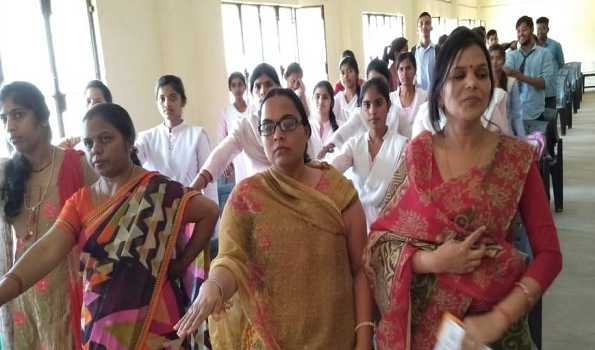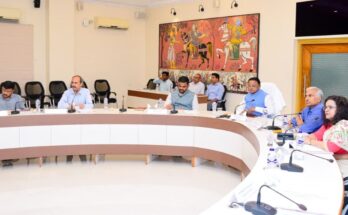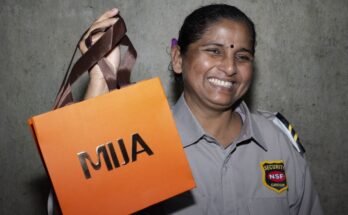By Radhika Tiwari
Every five years, as the Indian political parties awake from their deep slumber, they are suddenly reminded of matters of otherwise lesser importance.
Unfortunately, Reservation for women, who constitute half of our country’s population, falls into the same category.
The Women’s Reservation Bill or the Constitution (108th Amendment) Bill, 2008, is a pending bill in Parliament which proposes to amend the Constitution of India to reserve 33pc of all seats in the Lower House of Parliament, the Lok Sabha, and in all state legislative assemblies for women.
This Lok Sabha elections too, both BJP and Congress have promised big for the Indian women.
Both the leading parties of the “largest democracy in the world” have pitched in for women empowerment in their respective manifestos by promising 33pc reservation for women in Parliament and state assemblies.
The bill which was first introduced 22 years back in Parliament has seen little or no progress in its implementation. While it was again presented on the floor by the UPA government in 2008, the 108th Amendment to the Indian Constitution never got a clearance from the Lower House. Not even after it gained approval in Rajya Sabha in 2010.
Out of 299 representatives in India’s first Constituent Assembly in 1946 only 15 were females. Since then the women’s participation in Indian politics has increased, but at a slower, extremely slower pace. Even today, the women representatives in leading political parties stands between 10 to 13pc.
The term women’s political participation refers to a very wide meaning. It is not only related to ‘Right to Vote’, but simultaneously relates to participation in: decision-making process, political activism, political consciousness, etc. Political activism and voting are the strongest areas of women’s political participation. To combat gender inequality in politics, the Indian government has instituted reservation for women in the local bodies.
According to World Economic Forum’s annual global gender gap index studies, India ranks in top 20 countries worldwide for many years, with ninth best in 2013 — a score reflecting more women’s participation in India’s political process than Denmark, Switzerland, Germany, France and United Kingdom.
During India’s freedom struggle in 1920s, many women like Kamaladevi Chattopadhyaya and others, who contested, were defeated.
It was in 1927 in Madras that S Muthulakshmi Reddy became the first woman member to be nominated to the legislative council in colonial India. Reddy who came from the devadasi community was the first woman medical graduate from Madras Presidency, and ardently pursued several bills concerning assumedly ‘womanly’ issues such as Devadasi abolition, child marriage, medical and educational provisions for children and women, training of destitute women, etc.
In fact, the legislative assemblies that emerged in post 1937 elections had reserved seats for women, but did not last long. The elected women, largely from Congress, were reduced to a token status in the legislature. However, those elections gave these women their first experiences of canvassing — travelling in public spaces, working with men who were not from family, and meeting with women of different classes.
Women’s participation in political parties in 1990s remained low with 10-12 per cent membership. From 1970-1980, 4.3 per cent of candidates and 70 per cent of electoral races had no women candidates at all.
As of 2013, it has been reported of the Members of Parliament 11 per cent were women in Lok Sabha and 10.6 in Rajya Sabha. However, as of April, 2019, there are 28 women members in Rajya Sabha and 66 in Lok Sabha.
As the demands for equal rights grew, the three largest political parties of India namely, Indian National Congress (INC), Bharatiya Janata Party (BJP), and the Communist Party of India (CPI) created All India Mahila Congress, BJP Mahila Morcha, and National Federation of Indian women, respectively, to outreach amongst women.
While INC nominated the first woman speaker of Lok Sabha in 2009 and supported the elections for first female President Pratibha Patil, the BJP, on the other hand, encouraged greater representation of women by developing women’s leadership programmes, financial assistance for women candidates, and implementing a 33 per cent reservation for women in party leadership positions. The saffron party has also received women’s support on the matter of Uniform Civil Code, which aims to extend equal rights against Indian women.
The CPI too have voiced against gender inequality from time to time.
Delhi Secretary of CYSS – student wing of Aam Aadmi Party, Neha believes that real empowerment lies in equal share of power. She said, “Empowering women in every sphere of life will bring real equality in the society. The passing of the Reservation Bill in the Lok Sabha will be a landmark event in the Indian democracy.”
However, the question that arises here is that if everyone is so supportive of the bill then why is it still lying pending in Parliament. Reasons could vary from lack of political will to discuss the matter to the shallow mindset of some patriarch leaders who never miss on passing a sexist remark on women. From taking a jibe at Priyanka Gandhi’s clothing to commenting on Jaya Prada, our political system is full of misogynists. This could be one of the many reasons why women or their families do not deem Politics as a suitable career option.
“Who would listen to a woman,” said Leelay, a tradesman in Delhi NCR, adding, “Men are made to lead and women to follow, also given the circumstances of our country, girls are not are not safe in schools, streets and offices,who would look after them in the political arena.” What is so bad in the political arena, “There is a high chance of getting humiliated as leaders often shame each other to gain leverage,” he opined.
Whereas the youth thinks otherwise, “Since the women representation is so low, therefore, more and more females should aspire to join bureaucracy.” A 22-year-old DU student named Akash said, “Higher female participation in politics would lower the corruption level in India. “They would be a better administrator,” added Rahul.
According to an analysis of an official list of political parties from April 2001 to January 2015, since 2001, at least 14 political parties with a women-oriented political agenda have emerged across India. Five of these parties have contested either a general election or a state assembly election in the past 15 years, according to statistical reports of elections to the Lok Sabha and state assemblies. One such party named United Women Front was created in 2007 to advocate for 50 per cent reservation in parliament.
As far as the legislative assemblies are concerned, the densely populated state of Uttar Pradesh has 42 female members out of its strength of 403 in the present assembly, whereas state Rajasthan, constitutes 24 women out of 200 total members. Meanwhile, Jammu & Kashmir has only single lady out of its 30 MLAs, Kerala- eight, out of 140, West Bengal- 38 out of 286, and North-eastern state of Meghalaya- zero representation.
By and large, the women’s representation in the state assemblies is also dismal.
In the absence of a political will to debate, discuss and reach a conclusion, one is reminded of Brinda Karat’s apprehensions: “I hope the bill does not end up in the refrigerator”.
However, amidst all these stumbling blocks, female voter participation in India has seen an impressive jump from 11.25 per cent in 1967 Lok Sabha elections to 53.3 per cent in 2004 to a massive 65.3 per cent in 2014 Parliamentary polls — a sliver lining in bureaucratic cloud.





